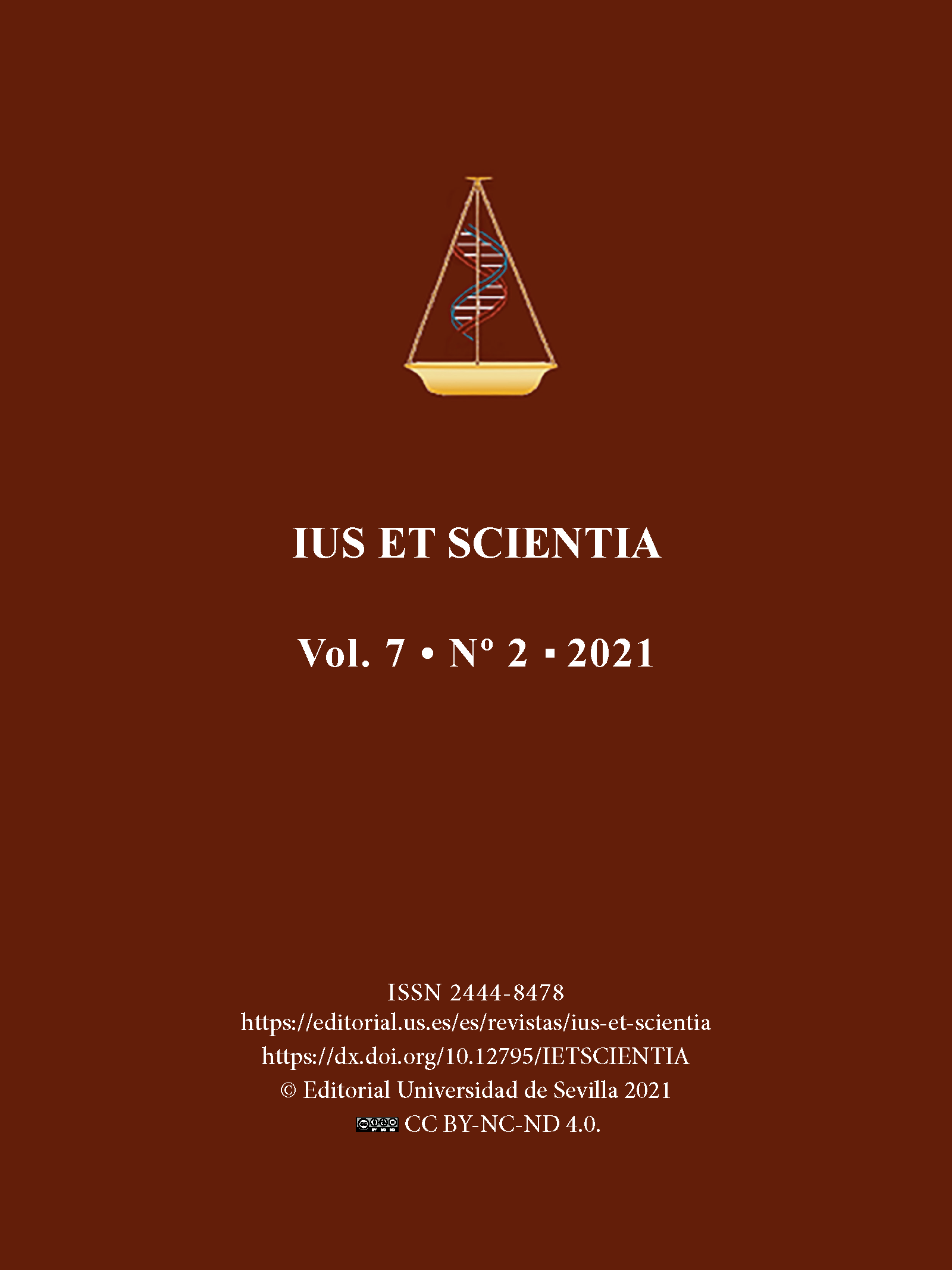Influencers and covert advertising on social media
DOI:
https://doi.org/10.12795/IETSCIENTIA.2021.i02.02Keywords:
Covert advertising, influencers, Advertising Code of Conduct, Young users, advertising abuse, social mediaAbstract
The effort to guarantee the principle of authenticity in advertising disseminated by influencers on social networks has resulted in the drafting and approval of the Code of Conduct on the use of influencers in advertising, promoted by the Spanish Association of Advertisers (AEA), Autocontrol and the Secretary of State for Digitalization and Artificial Intelligence, which came into force in January 2021. In the few months of life, the Advertising Jury of Autocontrol has issued six opinions and four resolutions in application of rule five, referring precisely to the requirement of clear and unequivocal identification of the advertising nature of any communication that intends this purpose, given the growing trend of commercial brands to use influencers' profiles to carry out (covert) advertising without users being aware of it.
This paper analyzes the adequacy of current self-regulatory measures to guarantee the principle of authenticity of advertising, particularly when it takes place through social networks and under the appearance of impartiality of an influencer.
Downloads
References
ARIAS, V. (2012): “Publicidad encubierta y emplazamiento de producto. Sentencia del Tribunal de Justicia de la Unión Europea, de 9 de junio de 2011 (caso “Alter Channel”)”, Comunicaciones en propiedad industrial y derecho de la competencia, Nº. 66: 169-196.
CARO CASTAÑO, L. (2016): “Microcelebridades y comunicación encubierta online en España. El caso de #Pentatrillones”, adComunica, Revista Científica de Estrategias, Tendencias e Innovación en Comunicación, 11: 121-144. http://dx.doi.org/10.6035/2174-0992.2016.11.8
FEIJOO, B., BURGUEÑO, S., SÁBADA, C., & GARCÍA-GONZÁLEZ, A. (2021): “La percepción de padres e hijos sobre la publicidad en redes sociales”, Comunicar, 67: 99-109. https://doi.org/10.3916/C67-2021-08
GÓMEZ NIETO, B. (2018): “El influencer: herramienta clave en el contexto digital de la publicidad engañosa”, Methaodos.revista de ciencias sociales, 6 (1): 149-156. http://dx.doi.org/10.17502/m.rcs.v6i1.212
GONZÁLEZ-VÁZQUEZ, L. (2021): ¿Es preciso legislar a nivel comunitario (UE) de forma armonizada sobre el marketing/publicidad encubierta de los ‹‹influencers›› en los medios sociales?, La Ley Unión Europea, 88: 1-10.
INIESTA ALEMÁN, I. (2019): “Eficacia de los influencers como recurso publicitario en la estrategia de los anunciantes locales”, Ámbitos. Revista Internacional de Comunicación, 46: 149-169. DOI: 10.12795/Ambitos.2019.i46.09
LABIO, S. (2006): “Publicidad encubierta. La información que vende”, Questiones Publicitarias, I (11): 51-65.
MARTÍNEZ-SALA, A.M., MONSERRAT-GAUCHI, J., SEGARRA-SAAVEDRA, J. (2019): “El influencer 2.0 turístico: de turista anónimo a líder de opinión”, Revista Latina de Comunicación Social, 74: 1344-1365. http://www.revistalatinacs.org/074paper/1388/71es.html DOI: 10.4185/RLCS-2019-1388
MARTI-PELLÓN, D., & SAUNDERS-UCHOA-CRAVEIRO, P. (2015): “Exposición infantil
a anuncios en webs de juegos de Brasil y de España”, Comunicar, 45: 169-177. https://doi.org/10.3916/C45-2015-18
MEGÍAS, J.J. (2014): “El principio de autenticidad en la comunicación comercial”, Comunicación. Revista Internacional de Comunicación Audiovisual, Publicidad y Estudios Culturales, 12: 65-81. https://idus.us.es/bitstream/handle/11441/58590/A5_Megias-Quiros_El-principio-de-autenticidad-en-la-comunicacion-comercial.pdf?sequence=1&isAllowed=y
MEGÍAS, J.J., & CABRERA, L. (2013): Ética y Derecho en la publicidad, Granada: Comares.
PERLADO, M., PAPÍ, N., & BERGAZ, M. (2019): “Del planificador de medios al experto en medios: El efecto digital en la publicidad”, Comunicar, 59: 105-114. https://doi.org/10.3916/C59-2019-10.
SEGARRA-SAAVEDRA, J., & HIDALGO-MARÍ, T. (2018): “Influencers, moda femenina e Instagram: el poder de la influencia en la era 2.0”, Revista Mediterránea de Comunicación, 9 (1), 313-325. https://doi.org/10.14198/MEDCOM2018.9.1.17
SERRA, P. (2011): “La confusión entre información y publicidad: el caso de las “revistas””, Actas del I Congreso Internacional de Ética de la Comunicación. Sevilla: Mad.: 548-560.
SIXTO-GARCÍA, J., & ÁLVAREZ-VÁZQUEZ, A. (2020): “Influencers en Instagram y publicidad engañosa: la necesidad de regular y autorregular”, Estudios sobre el Mensaje Periodístico, 26 (4): 1611-1622. http://dx.doi.org/10.5209/esmp.66921
TATO-PLAZA, A. (2019): “Aspectos jurídicos de la publicidad a través de lídees de opinión en las redes sociales”, Revista de Derecho Mercantil, 311: 49-74.
TUR-VIÑES, V., NÚÑEZ-GÓMEZ, P., & MARTÍNEZ-PASTOR, E. (2019): “YouTube, menores y cultura colaborativa. Revisión bibliográfica de la investigación académica”, Historia y Comunicación Social, 24 (1): 331-351. https://doi.org/10.5209/HICS.64498
VILAJOANA, S., ROM, J, & MIOTTO, G. (2019): “Retos de la autorregulación publicitaria ante los riesgos jurídicos y éticos del marketing de influencers”, Revista Mediterránea de Comunicación, 10: 115-129.Inteligencia artificial y Derecho del Trabajo.
Published
How to Cite
Issue
Section
License
Those authors being published in this journal agree to the following terms:
- Authors retain their copyright and they will guarantee to the journal the right of first publication of their work, which will be simultaneously subject to license recognition by Creative Commons that allows others to share such work provided it is stated the author’s name and his first publishing in IUS ET SCIENTIA.
- Authors may take other non-exclusive distribution license agreements version of the published work (e.g. deposit in an institutional digital file or publish it in a monographic volume) provided it is stated the initial publication in this journal.
- It is allowed and encouraged that Author s disseminate their work via the Internet (e. g. institutional digital files or on their website) prior to and during the submission process, which can lead to interesting exchanges and to increase citation of the published work.
- Abstract 2884
- PDF (Español (España)) 1695
- HTML (Español (España)) 849





